Search
Search Results

Image
A One-mina Weight from Southern Mesopotamia
This is a diorite mina weight in the shape of a sugar loaf. The inscriptions state that this was a copy of a weight made for Nebuchadnezzar, following the standard of Shulgi, "The Old Sumerian King" (reigned 2094-2047 BCE). It was the property...
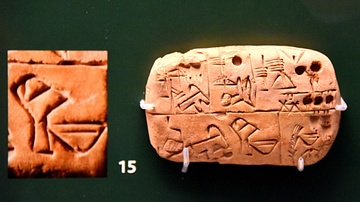
Image
Bread Rations from Mesopotamia
In this food issue list, "rations" is written by combining a human head a bowl (a triangular object in front of the head). This combination, in later Sumerian texts, means "to eat". The triangular object was the regular representation of...

Image
Female Worshipper Statue, Mesopotamia
Only the upper half of this clay statue of a naked woman has survived. It represent a worshipper. Traces of red color (original paint) can still be seen. She has an elaborate hair style and wears a 4-strand necklace and broad bracelets. Date...
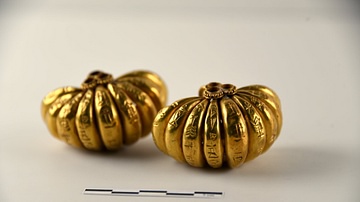
Image
Gold Earrings, Ur III, Mesopotamia
The convex and carved surfaces of the earrings. Each earring is composed of nine lunar-shaped segments forming a flattened half- ball. The cuneiform signs run vertically from above downward, starting from the right end. A pair of gold earrings...
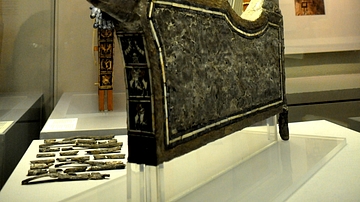
Image
Silver Lyre, Ur, Mesopotamia
This lyre was found in the 'Great Death-Pit', one of the graves in the Royal Cemetery at Ur. From Ur, southern Mesopotamia, Iraq. Early dynastic period, 2600-2400 BCE. (The British Museum, London)
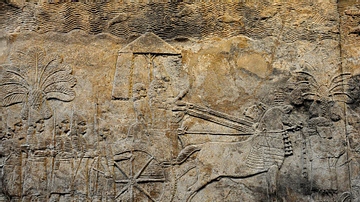
Image
Assyrian Military Campaign in Southern Mesopotamia
The Assyrian king in a chariot watches as prisoners are brought in and heads and booty are piled-up in a palm grove. Neo-Assyrian era, 640-620 BCE, Mesopotamia, Iraq. From Nineveh, south-west palace, court XIX, panels 10-12. (The British...
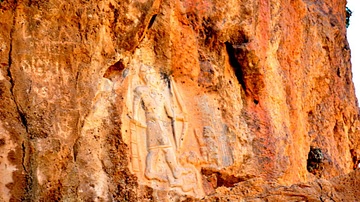
Image
Mt. Darbandi Bilula's Akkadian Rock Relief, Mesopotamia, Iraq
This rock relief dates back to the Akkadian era. It lies on the cliff of Mt. Darbadi Bilula, Hori and Shekhan area, Sulaimaniya, near the Iranian border, Iraq. Circa 2100 BCE. It features a victorious man with two captives before him; one...

Image
God and Goddess from Mesopotamia
The upper halves of terracotta plaques, depicting a male figure (on the left, who has a long beard) and a female figure (on the right, with bare breast) wearing a horned headdress (symbol of divinity) and appearing to hold a long bar in both...

Image
Map of Mesopotamia, c. 1400 BCE
This is a map of Mesopotamia showing the dominant kingdoms of Egypt, Mitanni, Hatti, and Kassite Babylonia.
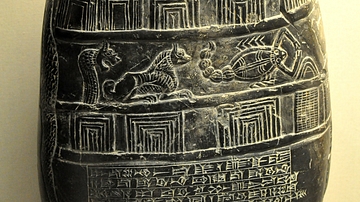
Image
Boundary Stone from Mesopotamia
This boundary stone, or kudurru, records a gift of land made by Eanna-shum-iddina, governor of the Sea-Land in Southern Babylonia. The receiver's name is Gula-Eresh. The text ends with a series of curses on anyone questioning the gift or...